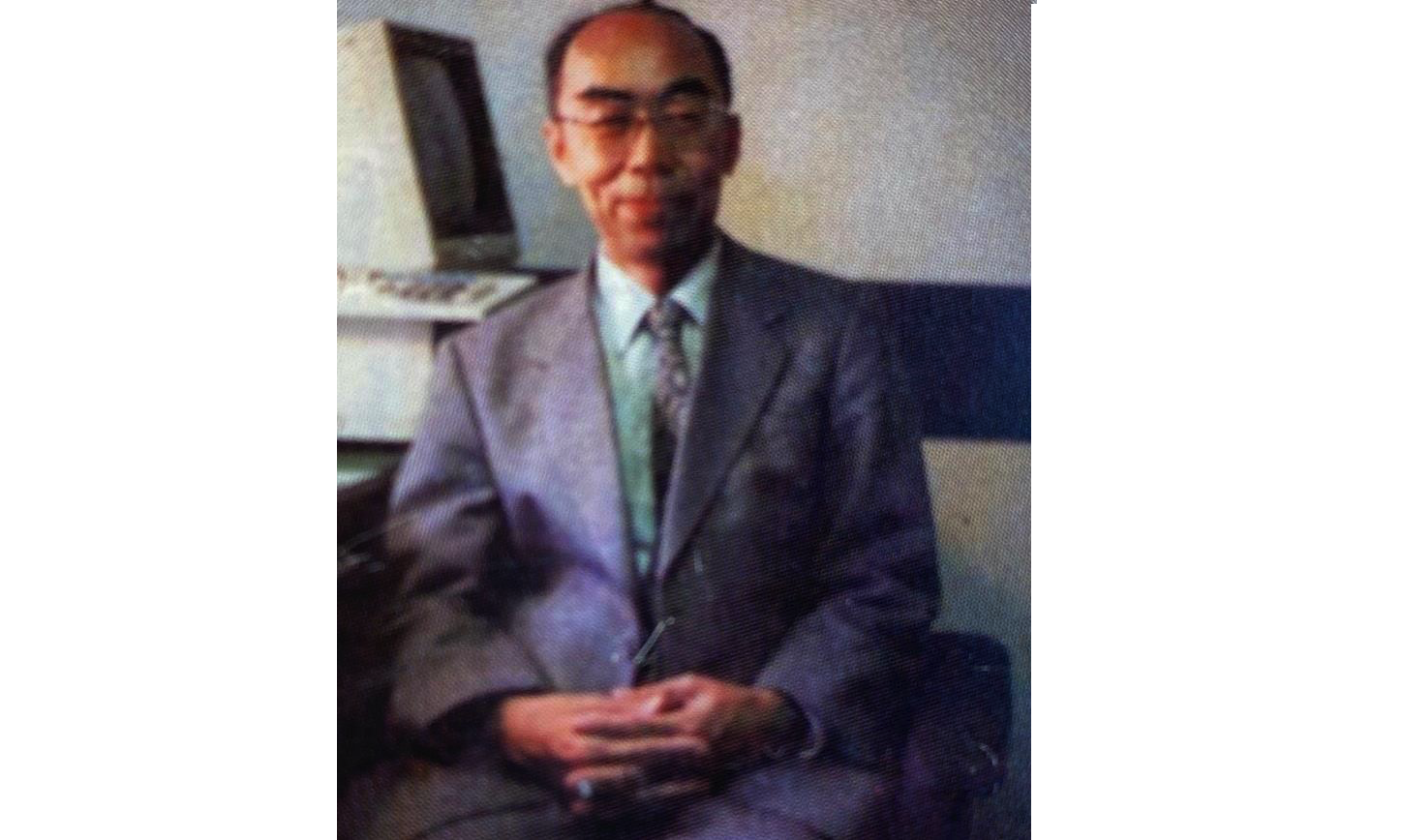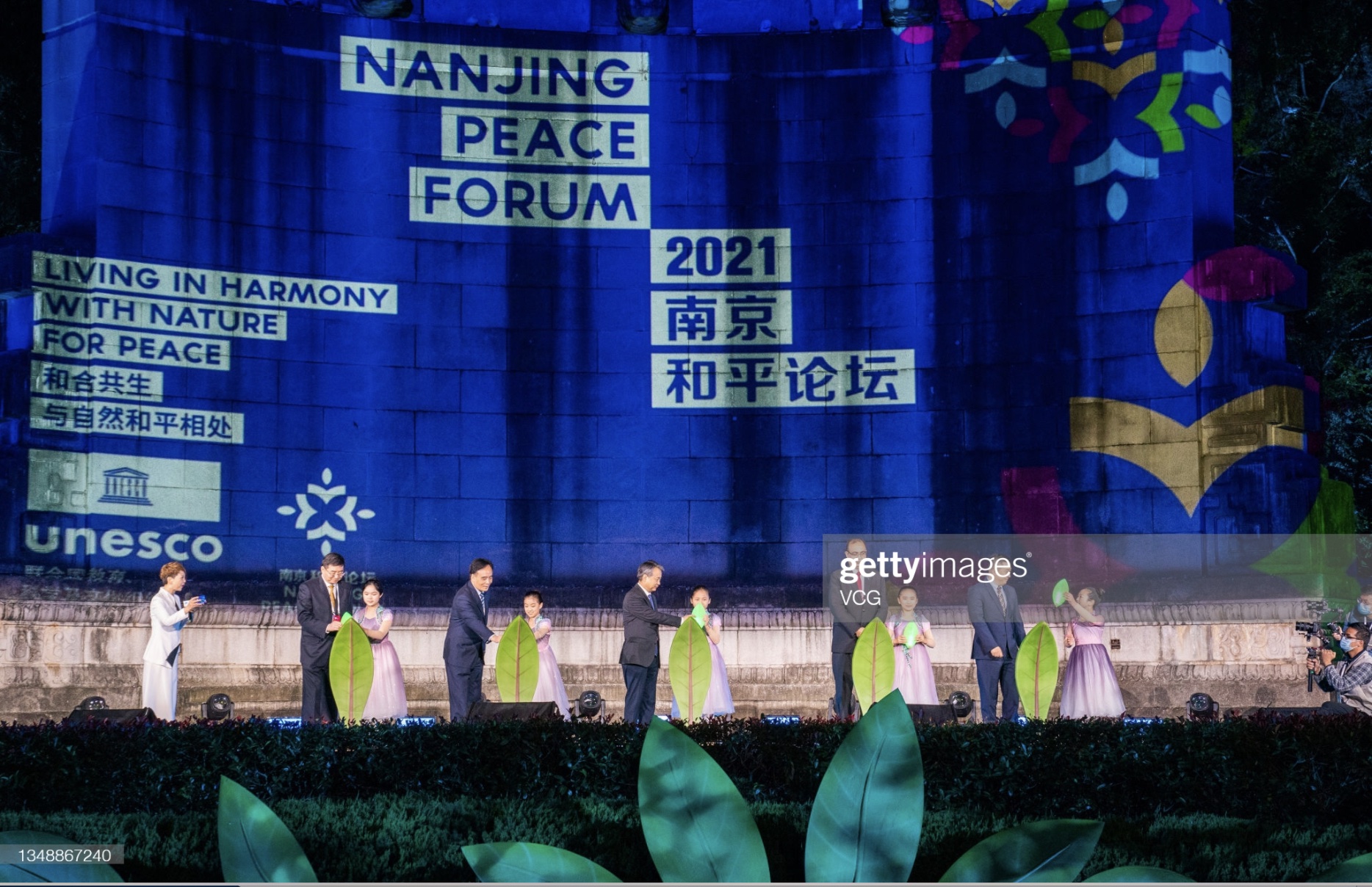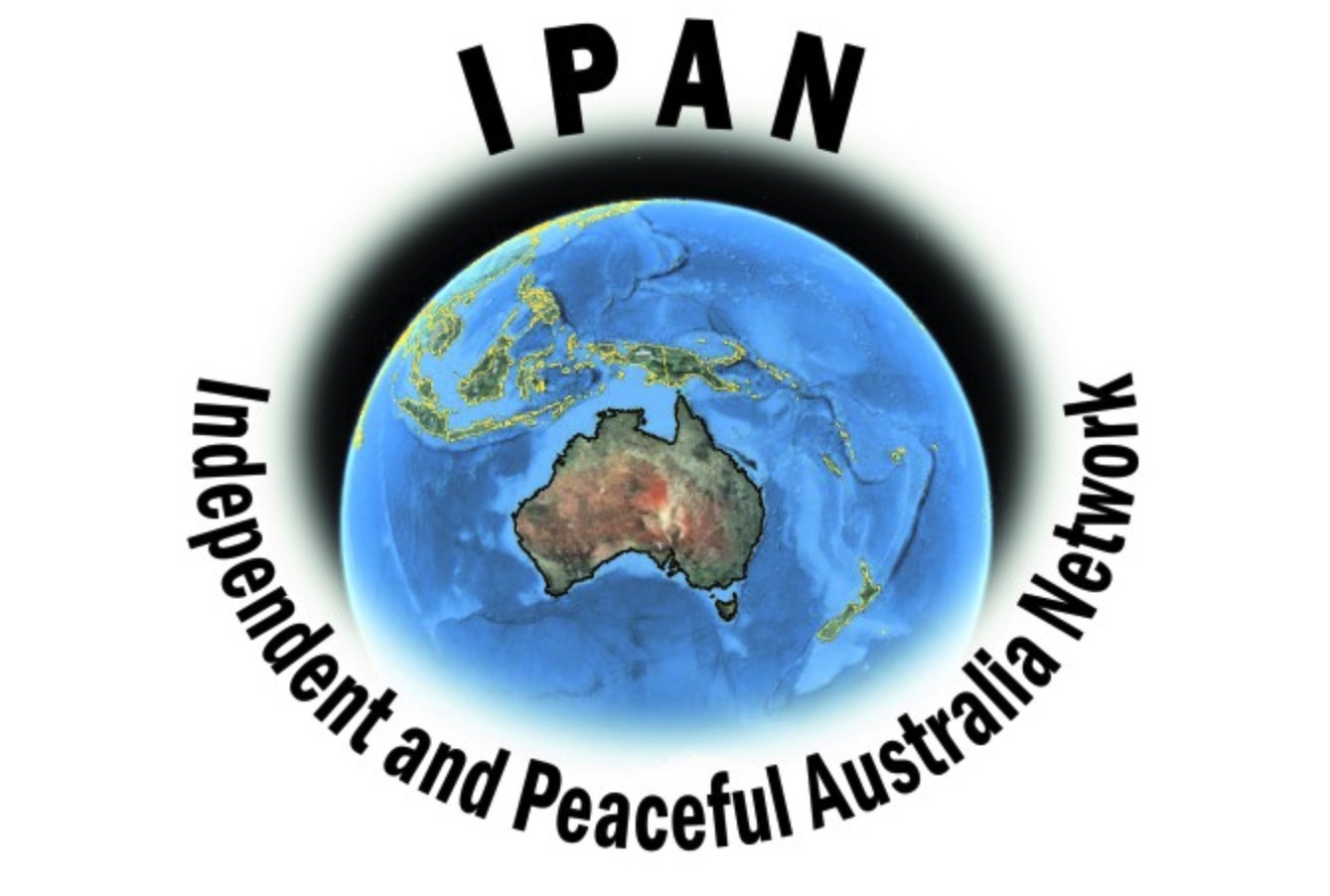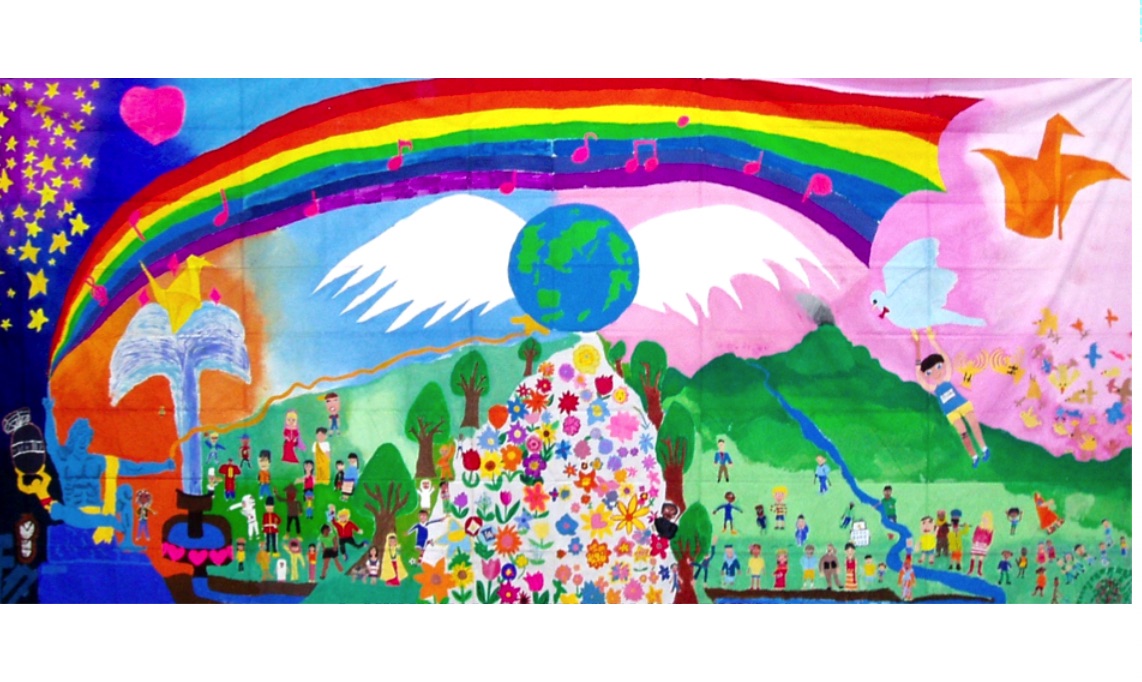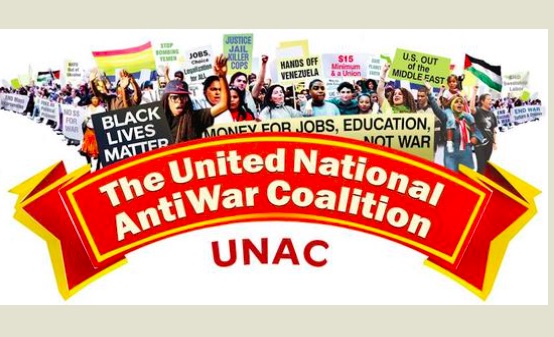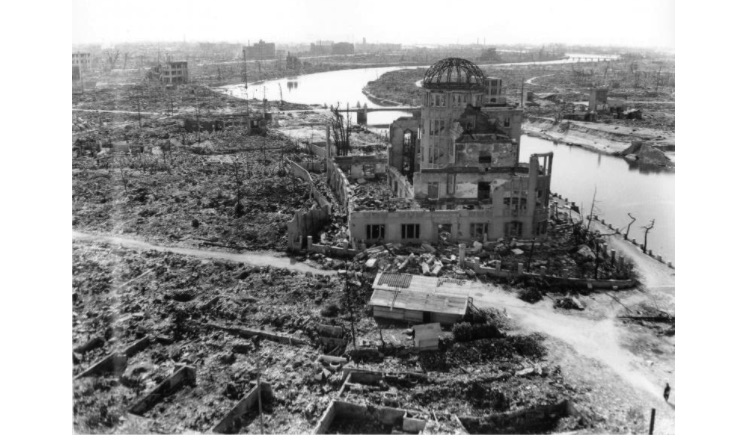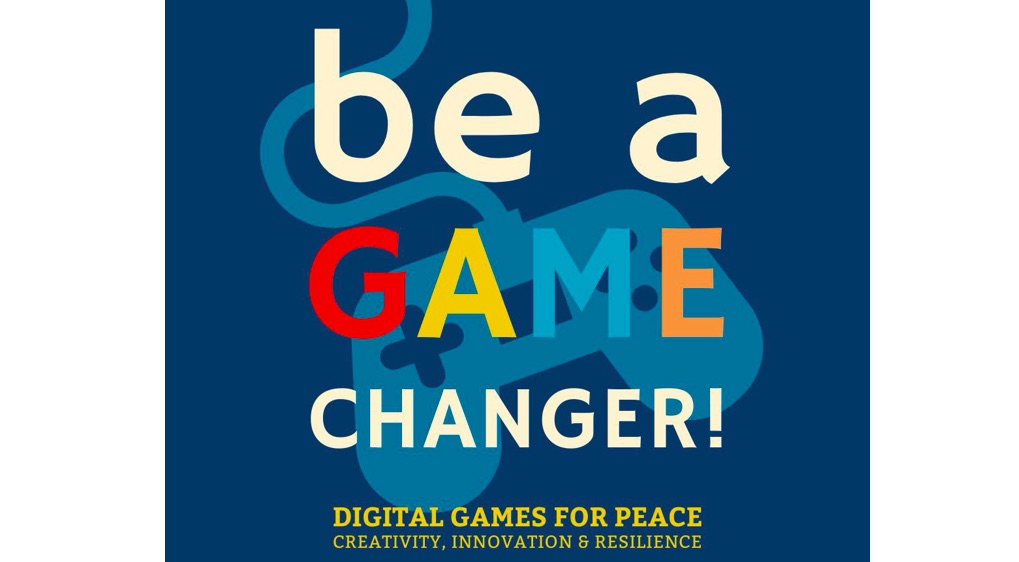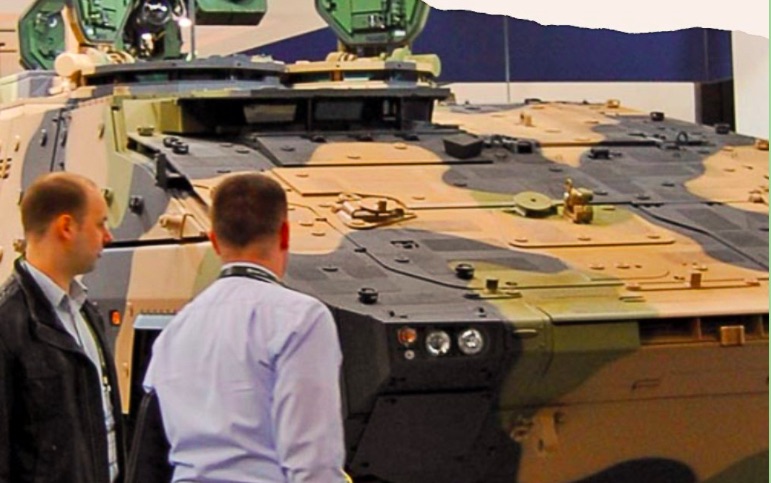FREE FLOW OF INFORMATION .
A survey by CPNN
We have found 42 events in 13 Asian and Pacific countries. They were listed in Google during the week of September 21-28 this year under the key words “International day of peace”, “Peace Day” and 国际和平日 (Chinese). 3 come from the facebook page of International Cities of Peace and 2 came from the website of Campaign Nonviolence. No doubt there were also events listed on the Internet in languages other than those for which we searched.
In addition to these, there are about 120 events listed on the maps of One Day One Choir and Montessori schools singing for peace, but there is no indication which took place this year and which took place only in previous years.
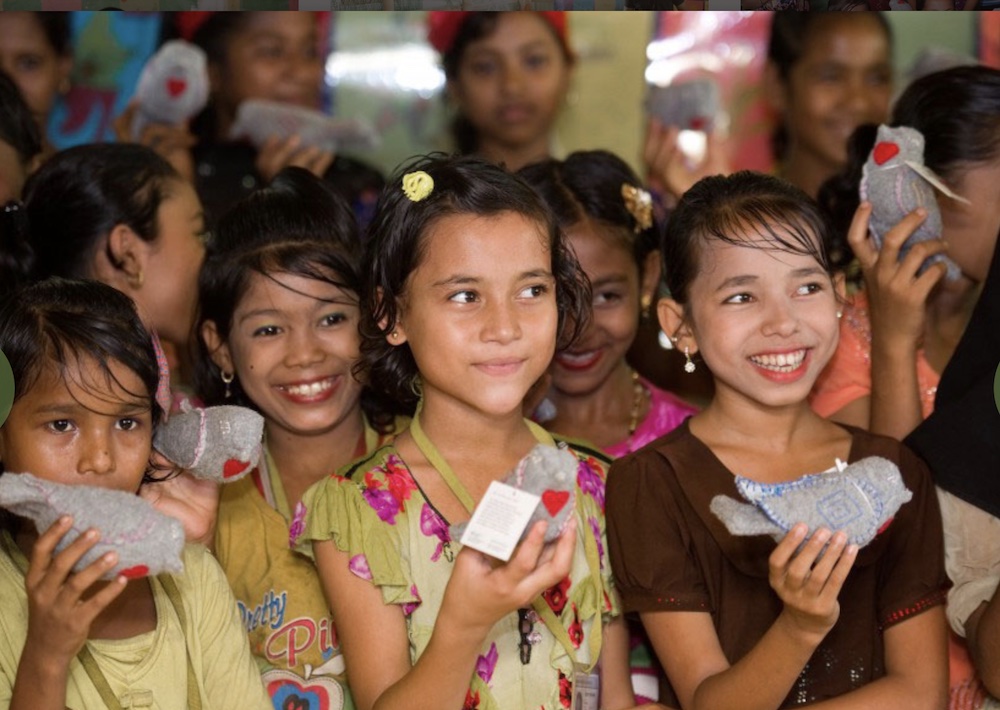
Children in a Rohingya refugee camp
AUSTRALIA
Australian Raising Peace Festival from 16-26 Sept, celebrating the UN international Day of Peace. Sponsored by Pace e Bene Australia in Partnership w/ Raising Peace. 33 great FREE online events.
ANNA BAY, AUSTRALIA
Peace is Possible. During this time, if fully vaccinated, people are able to exercise in groups of 2s or 5s on a reflective walk through the environment. This activity will be in solidarity with the aims of Campaign Nonviolence and awareness of the the need for Peace in this world.
BLUE MOUNTAINS, AUSTRALIA
The Blue Mountains Interfaith Group are inviting all concerned people to join with them in a gathering offering meditation, prayer, music and reflection via Zoom at 11am Tuesday, September 21
BRISBANE, AUSTRALIA
Two Indian origin sisters based in Australia are planning to set a world record by singing the world’s 195 national and UN permanent member state anthems in 100 languages, including Qatar’s national anthem. Siblings Teresa Joy and Augnes Joy will attempt the record at the St John’s Cathedral in Brisbane in Australia on September 21 as part of Cathedral’s International Day of Peace celebrations in approximately six hours, with a 10-minute break permitted every two hours. . . United nations Association of Australia Queensland and Augnes & Teresa Peace foundation are organising the programme.
COWRA, AUSTRALIA
Despite the cancellation of traditional World Peace Day events in Cowra, Chairperson of the Australian Chapter of the World Peace Bell Association, Ian Brown said the spirit of the occasion was important now more than ever. . . this year’s event will be scaled down with Mr Brown ringing Cowra’s World Peace Bell at 12pm on the day. . . Mr Brown also paid tribute to the nine nominees for this year’s Cowra Youth Peace Award, with the winner being named at a Rotary dinner on September 23.
SHEPPARTON, AUSTRALIA
Tuesday marks the International Day of Peace, and while the Shepparton community can’t gather together, more than 100 people across the city will come together online to light a candle for Afghanistan. Organised by Picnic 4 Peace, the annual event is designed to bring people together in solidarity against war across the globe, but this year’s event has a focus on Afghanistan following the Taliban takeover of the country last month.
SYDNEY, AUSTRALIA
Sydney’s Peace and Anti-War networks are collaborating on an 11-day, online Raising Peace Festival, 16-26 September. . . Raising Peace features more than 30 public events, clustered around the United Nations International Day of Peace on 21 September, when the keynote address will be given by His Excellency Mr Armando Vargas Araya, Ambassador for Costa Rica, at noon. . . The Festival brings together academics, activists and practitioners to celebrate key achievements, and to address challenges and strategies. The objective is to raise the profile of peace in public debate. . . The concept of a Raising Peace Festival began two years ago when International Volunteers for Peace (IVP), the Independent and Peaceful Australia Network (IPAN) and Women’s International League for Peace and Freedom (WILPF NSW) got together. Now some 30 peace groups are registered to be part of the Festival, from Knitting Nannas and the Marrickville Peace Group to PEN Sydney, the International Campaign to Abolish Nuclear Weapons (ICAN), and the United Nations Association of Australia (NSW). The festival will showcase a variety of approaches to peace, including a day devoted to First Nations voices and a session on Youth for Peace. Other topics include practising non-violence; prospects for peace in Afghanistan; faith and peace; peacebuilding in the Asia-Pacific; disarmament and anti-militarism; permaculture for peace, and the road to a nuclear free future. The program will also feature musical performances, poetry reading, yarning circles, film screenings and workshops.
BANGLADESH – ROHINGYA REFUGEE CAMPS
To mark World Peace Day on 21 September and as part of NRS Relief’s #PeaceDoves campaign launch, NRS Relief partnered with Danish Refugee Council (DRC) to run an art exhibition in three refugee camps within the Kutupalong area in Bangladesh. More than 300 Rohingya refugee children participated in the contest that highlighted peace and hope in conflict settings. Children were awarded with cuddly dove-shaped toys made from upcycled aid blanket and tarpaulin offcuts. . . .The #PeaceDoves project is NRS Relief’s latest CSR-driven awareness campaign that creatively and responsibly transforms production waste into messengers of peace. The campaign aims to spread ‘messages of peace’ and addresses critical issues such as the refugee crisis, sustainability and the private sector’s contribution to achieving a more peaceful society.
BRAC UNIVERSITY, BANGLADESH
For International Peace Day, CPJ and UN Women along with Peace Café members organised a series of events and activities such as peace adda, rally, seminar, social media campaigns, peace-message, essay, and photography competitions. . . Following the Peace Adda, a photo book named “The Power of Women”, was officially launched. This Photo Book displays the top submissions from all categories, selected from a range of excellent works from very talented youth artists across the country. This virtual programme was broadcasted live, and the recording can be viewed on CPJ’s Facebook page: www.facebook.com/cpj.bracu
DHAKA, BANGLADESH – CENTER FOR PEACE STUDIES
CPS celebrates Peace day 2021 through Book Launching, Rohingya Art Exhibition and Peace rally at NSU – A launching ceremony of a Bangla book on the Rohingya titled “Rohingya Refugee-Life: The Uncertain Future and the Liability of Civilization” was held virtually on 21 September 2021. It was jointly organized by the Center for Peace Studies (CPS) of South Asian Institute of Policy and Governance (SIPG), North South University (NSU) and Prothoma Prokashon. . . . CPS also celebrated World Peace Day 2021 through in person activities maintaining physical distance. These are; releasing balloons and pigeons, organizing a peace rally and a week-long Exhibition of Rohingya Artifacts. . . . Discussants in the book launching opined that the recommendations of the various chapters of this book would play a key role in policy formulation and implementation of action plans to address the Rohingya crisis. The program started with a poem recitation by a young Rohingya refugee. Arun Bosu, Coordinator of Prothoma Prokashon delivered the concluding remarks and hoped that the Prothoma Prokashon has been successful in conveying the true picture of Rohingya people’s lives to the readers. Academics, researchers, diplomats, journalists, and students were present among the participants. The event came to an end with a performance of a Rohingya traditional song by the Rohingya musicians.
DHAKA, BANGLADESH – RUSSIAN CULTURAL CENTER
Scores of school children discussed the consequences of war at an event at the Russian cultural centre in Dhaka on the occasion of International Day of Peace on Tuesday. The programme — Why do we need peace –was organised by Russian House (Russian Centre of Science and Culture) in collaboration with Russian compatriots association Motherland, and online children and youth forum Dove of Peace. Apart from the local school children, their parents and teachers also took part in the programme.
KUSHTIA, BANGLADESH
World Peace Day is celebrated today (Tuesday) 21st September 2021 with the slogan “We will all be a messenger of peace”. A colorful bicycle rally was organized by Bangladesh Scouts, Kushtia District Rover to spread the message of peace to all. Rover Leaders, Rover Scouts and Girl-in-Rover Scouts from various colleges and universities of the district participated in the rally, which started from Kushtia Government Central College at 8.30 am. They went to Kuthibari, stayed there for a while, talked to the people on the occasion of International Peace Day and distributed masks to raise awareness of Corona. Then everyone left from there and went to the shrine of the famous mystic saint Lalon Shah. On reaching there, a short song session was set up. After staying there for some time, we left again for Kushtia Government College. Arriving there our bicycle rally ended.
CAMBODIA
Events on the occasion of the International Day of Peace were held at the Russian Embassy in Cambodia. . . On this occasion, the school at the Russian Embassy in Cambodia joined the Dove of Peace Children and Youth Forum initiated by the Heirs of Victory International Union and the Dove of Peace International Project. The event was attended by teachers and schoolchildren of the educational institution at the RZU.
INDIA
On September 21, the International Day of Peace. . . an online launch event to kick-off the new World BEYOND War India and Afghanistan chapters! We’ll discuss World BEYOND War’s mission and campaigns, the current state of the peace movement in Afghanistan and India, and why we need a world beyond war. We’ll have time to break out into discussion groups to talk about what anti-war issues matter to you and how we can work together to create World BEYOND War chapters in India and Afghanistan.
AKHNOOR, INDIA
The Indian Army celebrated the International Day of Peace with local people at High School jogwan and Battal village. The program started at 9:30 from Battal village, where 7 villagers includin Sarpanch, Panch, women and children joined forces for the march raising slogans of peace. After the program a drawing competition was organized in which a total of 63 children participated. An Indian Army officer addressed the local people and delivered a lecture about the importance of peace and co-existence in the society followed by distribution of prizes bo the winners of the drawing competition.
DELHI, INDIA
Celebrating International Peace Day with a spirit of providing protection to the community, Aarohan (Delhi) with CFAR and DLSA has iitiated to vaccinate 1000 transgeners in Sultanpuri.
DIMAPUR, INDIA
To commemorate International Day of Peace 2021 on September 21, The Morung Express, a Nagaland-based newspaper, is organising a YouTube singing competition with theme: The Road to a Lasting Peace. An update issued on Sep. 9 informed that the competition, ‘Sing For Peace’ is to celebrate through music the International Day of Peace which was established in 1981 by the UN General Assembly to commemorate and strengthen the ideals of peace both within and among all nations and people. The competition is said to be free and open to all with no age limit. The song must be an original composition sung in any one of the Naga languages
GARAMPANI, INDIA
Various competitions were organized as Messenger of Peace by Innovative Scout-Guide Open Group at Rainka Khairna. In the painting competition organized, Ankit Kumar got first. . . various Cub Bulbul Scout Guide Rover Ranger and Unit Leaders will participate in a three-day Messenger of Peace webinar on behalf of the National Headquarters of Bharat Scouts-Guides.
(Survey continued in right column)
Question for this article
What has happened this year (2021) for the International Day of Peace?
(Survey continued from left column)
JEHANABAD, INDIA
Under the leadership of Bihar State Bharat Scouts and Guides District Jehanabad, a painting competition was organized on the occasion of World Peace Day. In which Vaishnavi Kesari stood first. . . The organization commissioner, while addressing the scouts and guides on this occasion, said that people from all over the world adopt humanity on this day and forget all the gaps of the society and think about the well being of each other, United Nations Organization Invites countries to honor the cessation of their respective hostilities on this day.
JHAPA, INDIA
Today, on the occasion of World Peace Day, Purnima Devi, head of Gram Panchayat Jhapa, was speaking in a seminar organized in the Panchayat Bhawan of Gram Panchayat Jhapa, on the occasion, social worker Mukund Saw said that by talking peacefully. Every issue can be resolved. . . In the meeting, the Vice President and Treasurer of the Gram Sabha from all the 14 villages of the Panchayat, all the honorable members, all the people of the Gram Panchayat Jhapa were present.
LEH, INDIA :
All India Council of Human Rights, Liberties & Social Justice (AICHLS) and Mahabodhi International Meditation Centre (MIMC ) are jointly organizing 11th International Peace Conference to observe International Day of Peace, in Leh. . . the Peace Conference will be conducted in collaboration with the all religious organizations in Ladakh. On the occasion, the Council also conferring the 7th Dr APJ Abdul Kalam Award to Venerable Bhikkhu Sanghasena, the Founder of Mahabodhi International Meditation Centre.
MANIPUR, INDIA
Manipur would be organising ‘Foot March for Justice and Peace’ from September 21 (International Peace Day) to October 2 (International Non-violence Day) in some select villages of five districts of the state. In a statement, the Parishad informed that the march will be carried out along with its associated groups and partner organisations. On the occasion of International Peace Day, a campaign will be launched at Karang Thanga and Andro-Huikap in Bishnupur and Imphal East district respectively. The foot march will also be participated by Ekta Parishad national coordinator Ramesh Sharma and state coordinator Aribam Rishikanta Sharma. The foot march will be carried out in more than 100 districts of 13 states including Manipur. The main objective of the march is to propose establishment of Ministry of Justice and Peace at national and state level.
MEERUT, INDIA
On the occasion of World Peace Day, a program was organized by the Environment and Sanitation Club at the Commissioner’s residence. In this, Commissioner Surendra Singh flew white pigeons as a symbol of peace. . . Commissioner Surendra Singh said that the importance of World Peace Day becomes more in today’s context.
NAGALAND, INDIA
Nagaland State Bharat Scouts and Guides (NSBSG) will be celebrating the ‘International Day of Peace’ on September 21 at Mezhür Higher Secondary School in Kohima on the theme “Recovering better for an equitable and sustainable world.” Different activities are being taken up by members at various levels to celebrate the day in a befitting manner.
NAGPUR, INDIA
Every year, the India Peace Centre commemorates World Peace Day by holding its major event. This year, in light of pandemic guidelines and to have a broader impact, an All India Speech, Competition on the concept of Peace has been arranged. . . Dr. Tejinder Singh Rawal, the project manager and Deputy Director of the India Peace Centre, explained the event, saying, “Submissions are welcomed from citizen Indians of all age ranges.” The preliminary round’s topic is “What Constitutes Peace in the Indian Context.” . . Nagpur Toastmasters Club will manage the entire procedure, screening entries, providing technical assistance, and judging the occasion.
PARIKRAMA MARG, INDIA
World Peace Day was celebrated by Rotary Club Samarpan at New Horizon School, Parikrama Marg. On this occasion, speech competition, poster making competition and slogan competition were organized among the students. The students who secured first, second and third place in all the three competitions held on Tuesday were awarded with prizes and certificates.
PHAGWARA, INDIA
International peace day was celebrated at MLU DAV College Phagwara with great zeal and enthusiasm under the guidance of Dr. Kiranjeet Randhawa Principal of the college . . . A seminar was ogranised by faculty members for students to encourage them to learn the word ‘Peace’ and its true meaning. Peace day provides a globally shared date for all humanity to commit and build a culture of peace. Students participated in various activities and shared their views through speeches, poems and songs.
THIRUVANANTHAPURAM, INDIA
Local Self Government, Rural Development and Excise Minister MV Govindan Master, who arrived at the Magic Planet yesterday evening as part of the International Peace Day celebrations organized by the Child Rights Commission and the Different Arts Center, flew balloons into the sky as a message of peace with children with disabilities. The sight of hundreds of water balloons soaring into the sky fascinated children and spectators alike.
JAPAN
Friends in Japan celebrate the International Day of Peace by wearing traditional kimono as a symbol of the Culture of Peace and the World Peace Flag Ceremony. May Peace Prevail On Earth. See video
SHIJUKU, JAPAN
International Peace Day-Panel exhibition and lunch lecture on human rights was held in Shinjuku on September 20th to learn about human rights again.
SEOUL, KOREA
The Kyung Hee University System will host the Peace BAR Festival 2021 to mark the 40th U.N. International Day of Peace that falls on Sept. 21. The event will kick off under the theme of “No Time to Lose, A Quest for Immediate Action for Planetary Crisis”. . . This year’s festival will consist of five conferences to be held until December, bringing together scholars from around the world, including representatives of the Club of Budapest and Potsdam Institute for Climate Impact Research, and professors from Stanford and Harvard universities. They will discuss measures to overcome various crises facing the world, such as climate change, exhaustion of natural resources, the COVID-19 pandemic, social polarization and inequality. . . All conferences will be held online due to the prolonged COVID-19 pandemic, and will be streamed through the YouTube channel of the Kyung Hee University Global Academy for Future Civilization.
PENANG, MALAYSIA
In conjunction with the International Day of Peace on September 21, Penang Harmony Agency organized the “Ride around the World, Ride for Peace” virtual cycling event. . . Penang State Women’s Social Development and Non-Islamic Religious Commettee Chairman Zhang Ying said at the launching ceremony that the state government celebrated the International Day of Peace for the first time this year.
BANKE, NEPAL
On the occasion of the International Day of Peace, we celebrated by ‘lightening the lamp’ (Deep Prajwalan). This and the Panchmukhi Shiva Temple sanitation program were jointly organized by Nepal Unites, Nepal Youth Council Lumbini, Genteel Society Nepal, and the United Religions Initiative at Rapti Bridge in Duduwa Rural Municipality Ward No. 4 of Banke District. The chief guest of the program, ward Chairperson Bhandari Lal Yadav, expressed the need for peace in the world and the need to clean the environment because we are all human beings living on the earth. Bandari said that we need to protect and find peace in nature.
WELLINGTON, NEW ZEALAND
An online vigil to support victims of the Auckland terror attack will take place on Sunday. The prayer vigil, organised by the Wellington Interfaith Council, will be an opportunity for people all over the country to offer solidarity to the victims of the attack, and also the Sri Lankan and Muslim communities. The vigil would also mark the United Nations’ International Day of Peace on Tuesday.
PAKISTAN – KASHMIR PARLIAMENTARY PEACE CONFERENCE
Pakistan on Tuesday observed the International Day of Peace calling upon the United Nations to play its due role in mitigating decades’ long sufferings of the people of Indian Illegally Occupied Jammu and Kashmir (IIOJK). . . . Addressing the Kashmir Parliamentary Peace Conference here, Speaker National Assembly Asad Qaiser said it was the history that Kashmir region always remained peaceful but its peace was destroyed during the Dogra rule before creation of Pakistan. He said more than 1.5 million homes had so far been burnt by brutal Indian forces in IIOJK where all basic human rights were being denied. The speaker was of the view that a referendum should be held in IIOJK in accordance with the resolutions passed by the UN Security Council, giving people of Kashmir their legitimate right to self-determination. . . . In Sukkur, Shaheed Dodo Soomro Welfare Orgnization (SDSWO) held a ceremony to mark the International Peace Day.
PAKISTAN PEACE LEAGUE
A number of peace activists, human rights defenders, religious leaders, media, political qnd CSO representatives attended the Pakistan Peace League 2021. Guests, audience and youth appreciated the idea qnd speaches about the importance of peace.
LAHORE, PAKISTAN
A walk was held in connection with World Peace Day at Cathedral Crunch Lahore.
PHILIPPINES – OFFICE OF THE PRESIDENTIAL ADVISER ON THE PEACE PROCESS
Throughout the month of September, the Office of the Presidential Adviser on the Peace Process (OPAPP) will spearhead various peacebuilding activities to instill greater consciousness and understanding among the Filipino people on the comprehensive peace process to strengthen and sustain institutional and popular support for and participation in this effort, as well as in the global movement spearheaded by the United Nations to promote a Culture of Peace based on nonviolence, respect for fundamental rights and freedoms, tolerance, understanding and solidarity. .. . The Peace Month celebration also coincides with the observance of International Day of Peace with this year’s theme, “Recovering better for an equitable and sustainable world.” For more details, click here
PHILIPPINES BOY SCOUTS
Boy Scouts of the Philippines – Messengers of Peace Roadshow. Held on September 21, 2021 (5-7pm) via Zoom Meet together with Scouts and Leaders around the Philippines! Where the Base Commanders gave us an exciting activities! ; shares one’s hobbies, showing our talents in dancing, slogan & poster making, fun games & quiz and a dialogue for peace. Understanding the meaning of Peace, the Impact in making Peace.
CAGAYAN DE ORO, PHILIPPINES
On the commemoration of the International Day of Peace, with the theme “Recovering Better for an Equitable and Sustainable World,” the Philippine Ecumenical Peace Platform (PEPP) has appealed to both the government and the National Democratic Front of the Philippines (NDFP)to give peace talks a try.
LIPA CITY, PHILIPPINES
Just like in the previous years, De La Salle Lipa (DLSL) actively commemorated the International Day of Peace and International Peace Month last September 21. DLSL’s symbolic observance was in accordance with this year’s theme for the United Nation-led activity, “Recovering Better for a Sustainable and Equitable World. Among the highlights of the event were the recollection of the past years’ Peace Month remembrance, Prayer for Peace, showcasing of Peace Cranes, and a Song for Peace.
DHAMMAKAYA, THAILAND
In Thailand, Buddhist monks lit 200,000 candles on Tuesday at the Dhammakaya temple near Bangkok to celebrate the International Day of Peace.

